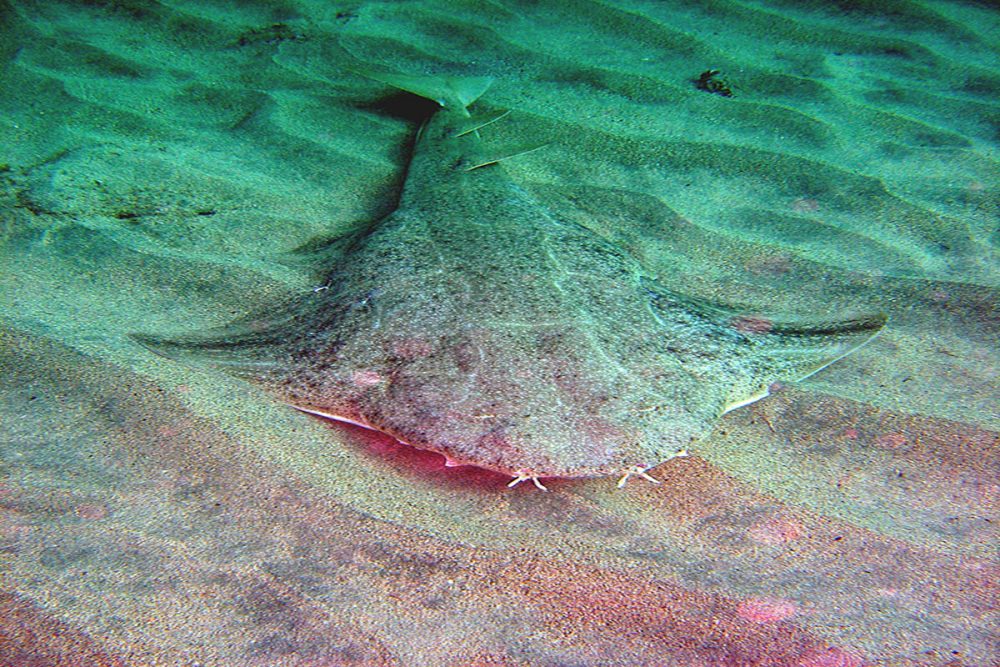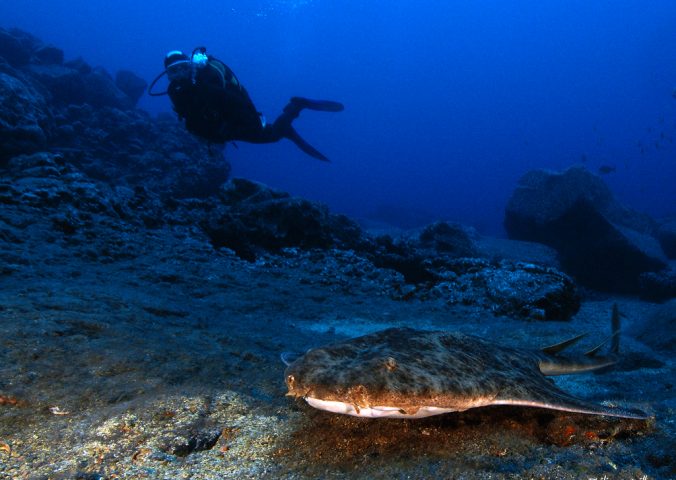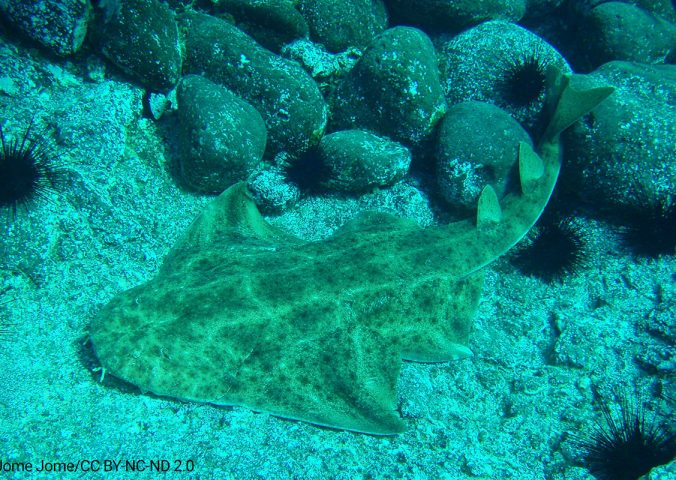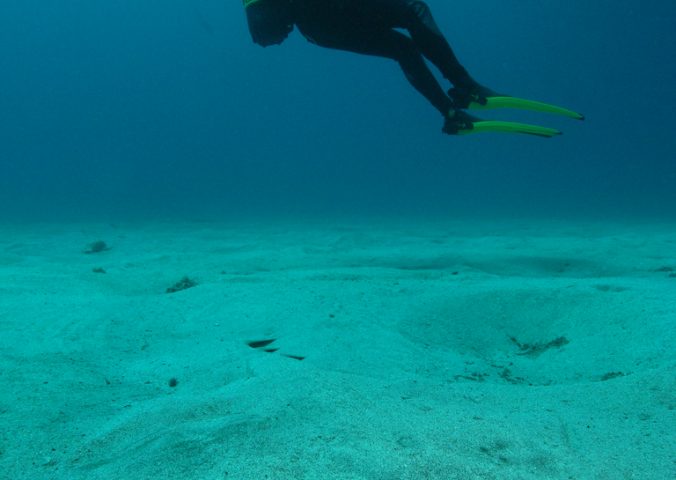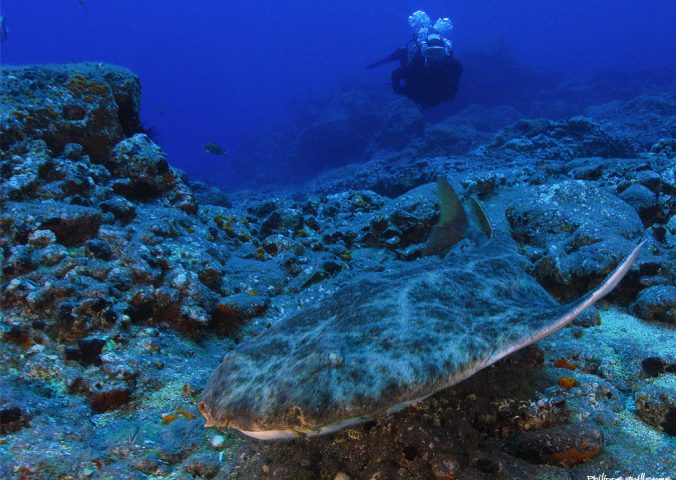About
The Angelshark is a distinctive shark species found in the northeast Atlantic and Mediterranean Sea. It is a “flat shark” (one that is dorsoventrally flattened) and an ambush predator, relying on camouflage to surprise its prey.
Squatina squatina is a nocturnal bottom dwelling shark species and the only species of angel shark that is found around the coast of the British Isles. The angel shark family (Squatinidae) has been declared the second most threatened of all sharks and rays’ families, following the sawfishes. This species has a relatively low life cycle and reproduction occurs by aplacental viviparity (live young develop inside the female). The gestation period takes between 8 and 10 months with females giving birth to between 7 and 25 pups.
The angelshark range has contracted by over 80% in the past century. Angel sharks are very susceptible to being accidentally caught in bottom fishing gear due to their demersal nature. Fisheries pose one of the biggest threats to this species, alongside human disturbance and habitat degradation as they have preference for inshore sandy habitats.
In 2008, angelsharks were added to Schedule 5 of the UK’s Wildlife and Countryside Act prohibiting all intentional disturbance, targeting or injury in UK waters. In 2009, three species of angel shark received protection from European Council Regulation (216/2009) and the EU regulation 2017/127, so they cannot be targeted, retained, transhipped or landed in EU waters. The three species of angel shark (S.aculeata, S.oculata, S.squatina) are protected in the Mediterranean in two ways: within six marine reserves around the Balearic Islands and under Annex II of the Barcelona Convention, where fishing for these species is forbidden and they must be released if they were captured.
- Order: Squatiniformes
- Family: Squatinidae
- Population: Unknown
- Trend: decreasing
- Size: Up to 2.4m (?)
- Depth Range (m): <1 m to 400m
EDGE Score
Distribution
Angelsharks were historically common in the northeast Atlantic, Mediterranean and Black Seas from Norway south to Morocco. Today, a unique stronghold for this species is found in the Canary Islands where angelsharks are regularly seen by divers and fishers. Smaller populations are also present in other areas of Europe, including Wales, Ireland, Turkey and Greece.
Habitat and Ecology
Angelsharks are benthic animals, living in inshore waters and along the continental shelf, mainly on sandy and muddy bottoms. They are most active at night, using their pectoral fins to bury themselves in the sand getting perfectly camouflaged to ambush their prey. The angelshark diet consists of a range of fish crustaceans and molluscs, and even in one case, a cormorant! They can detect electric fields produced by these animals using their sensitive barbles.
